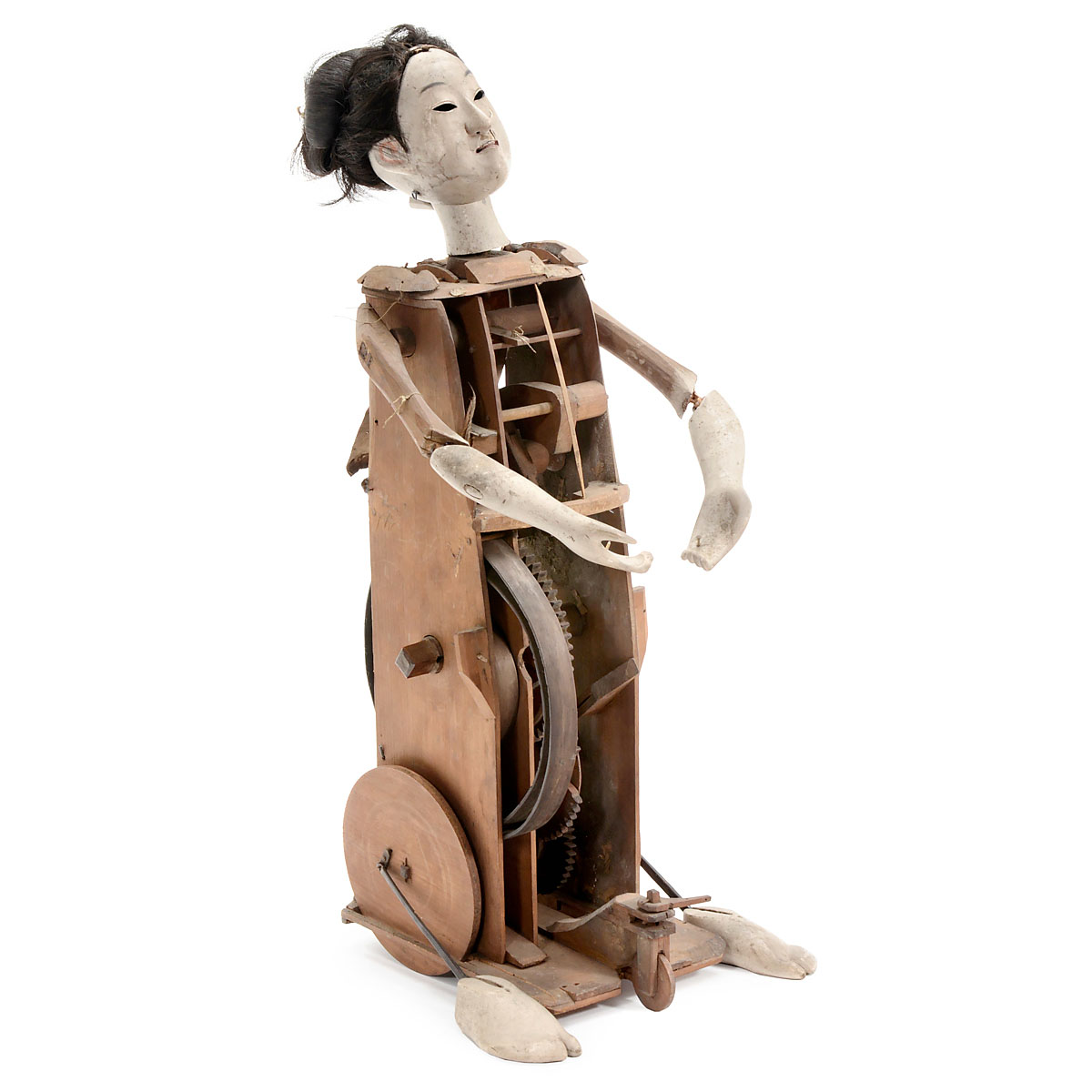
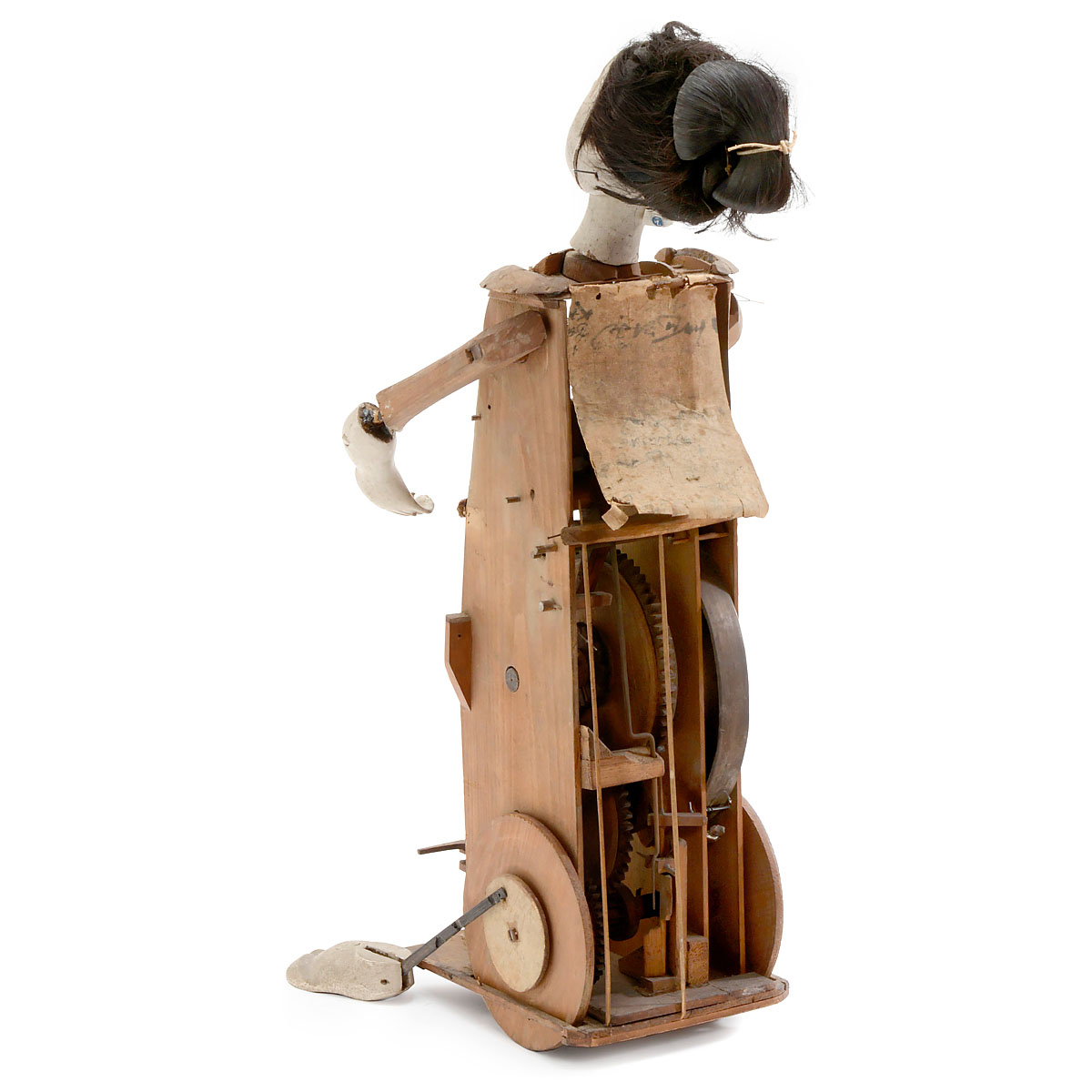
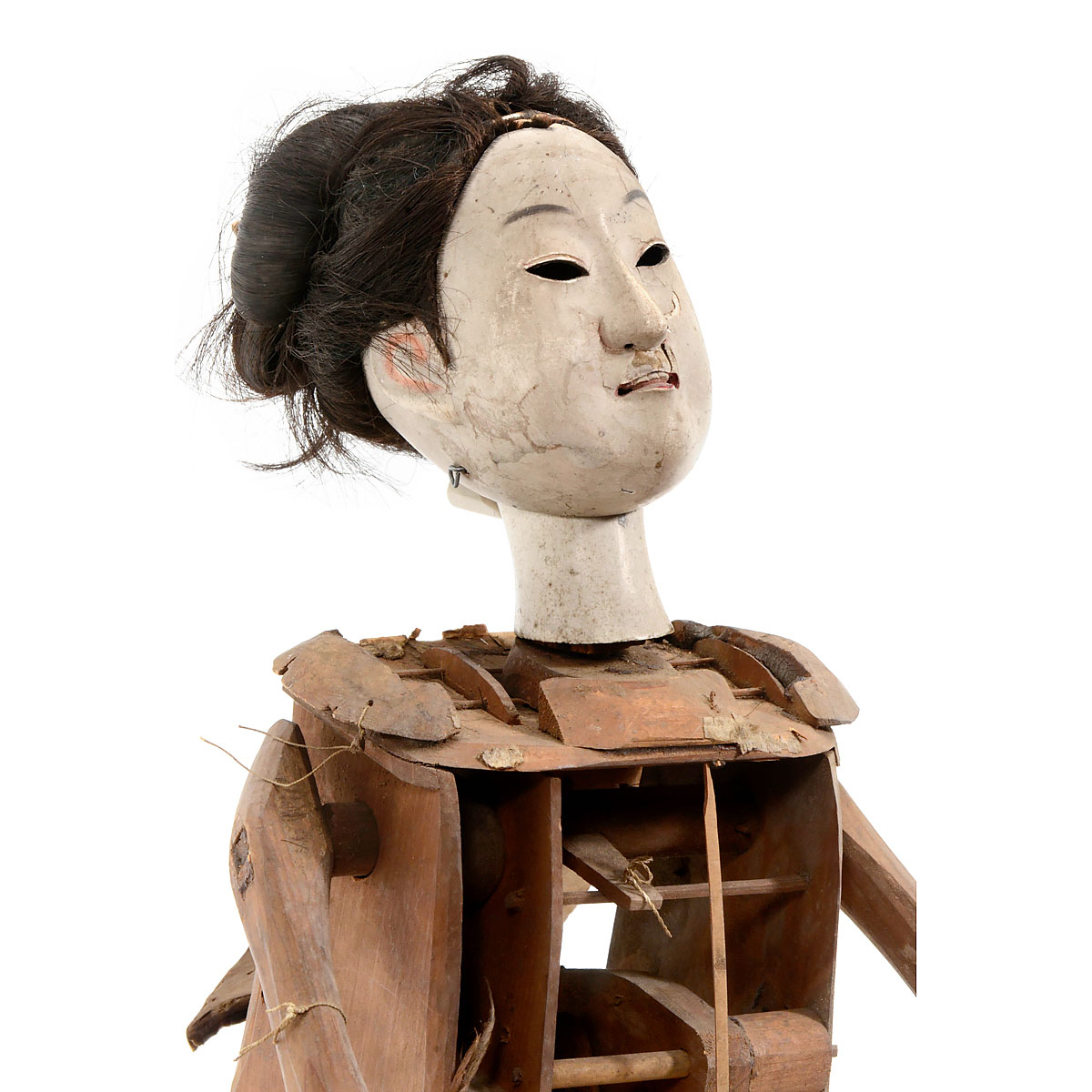
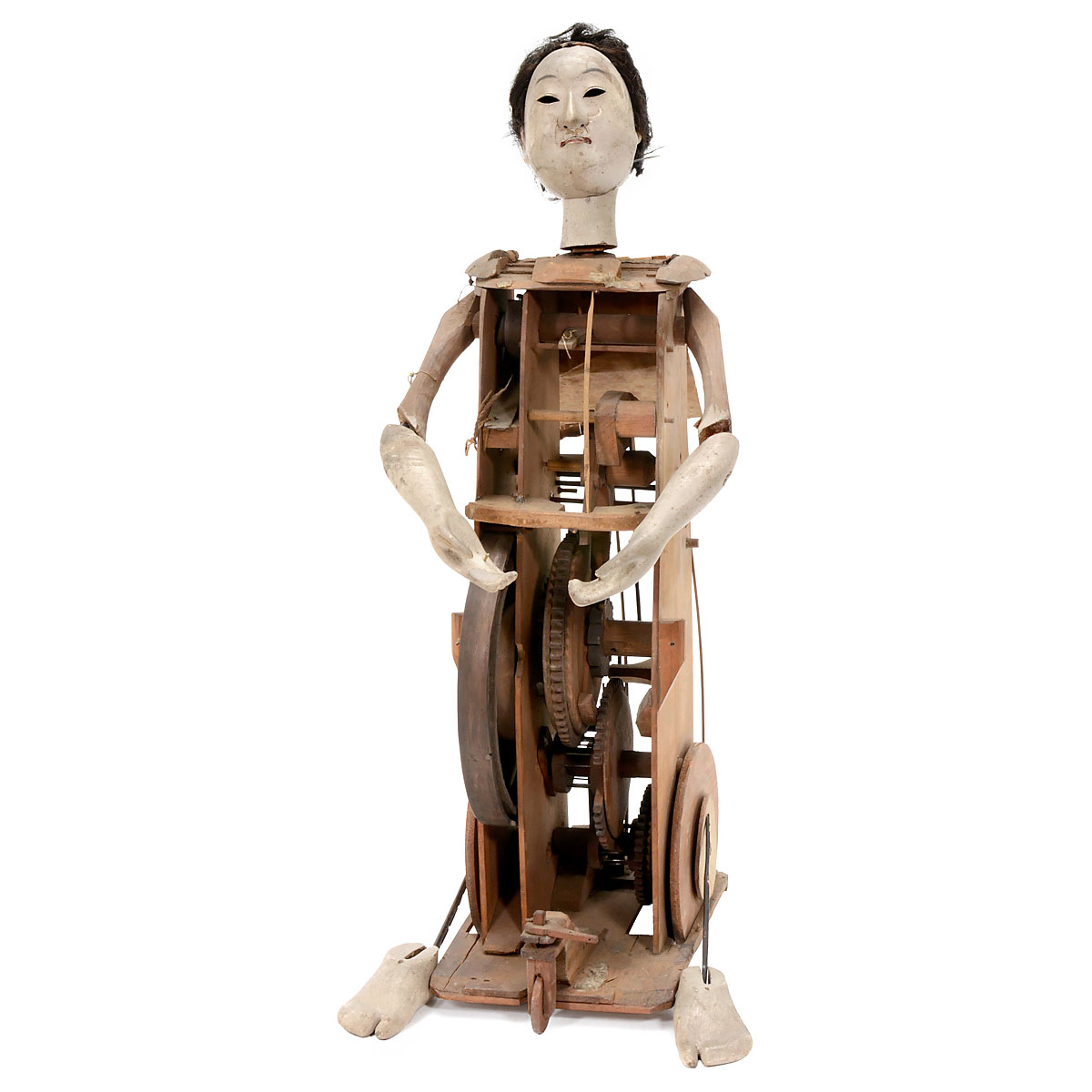
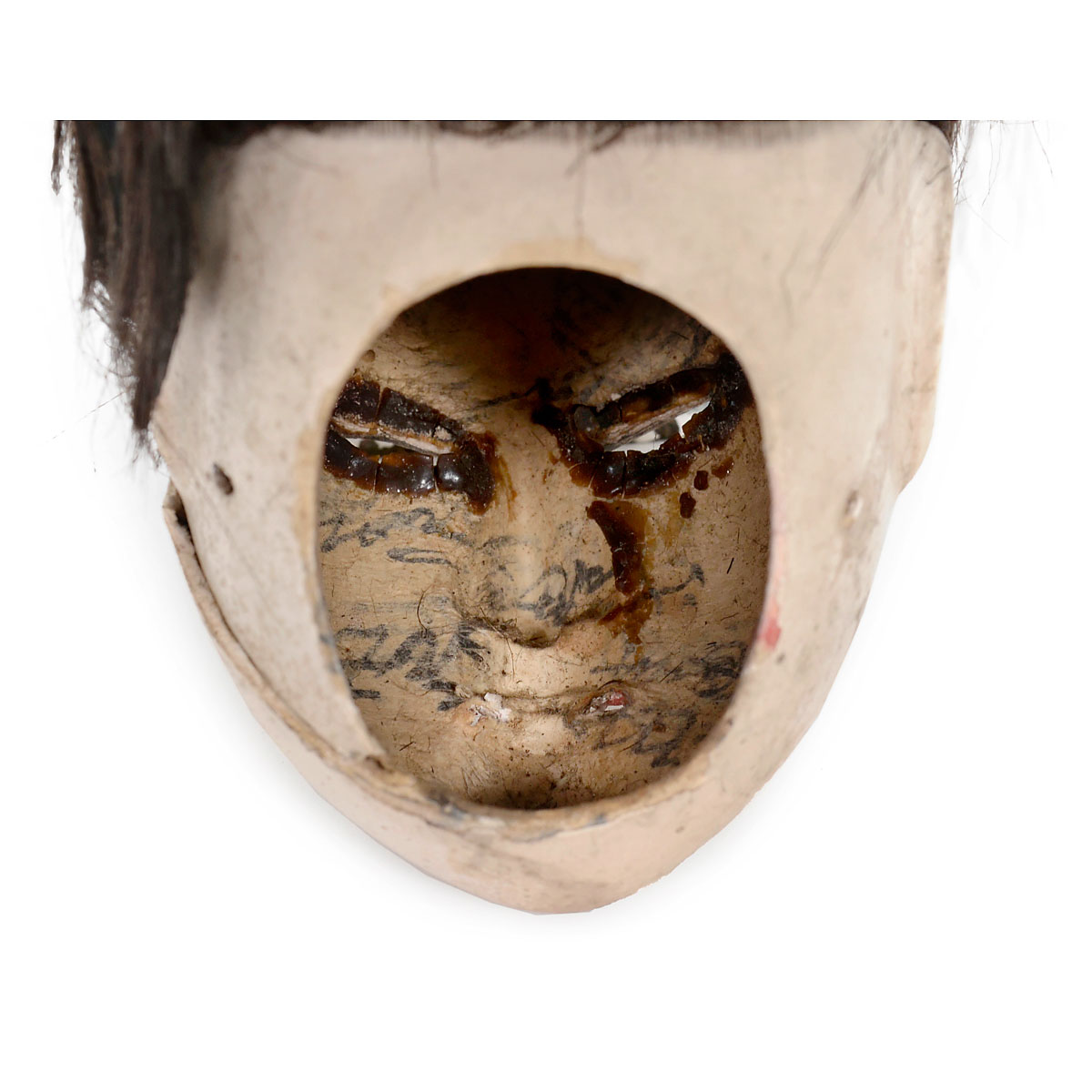
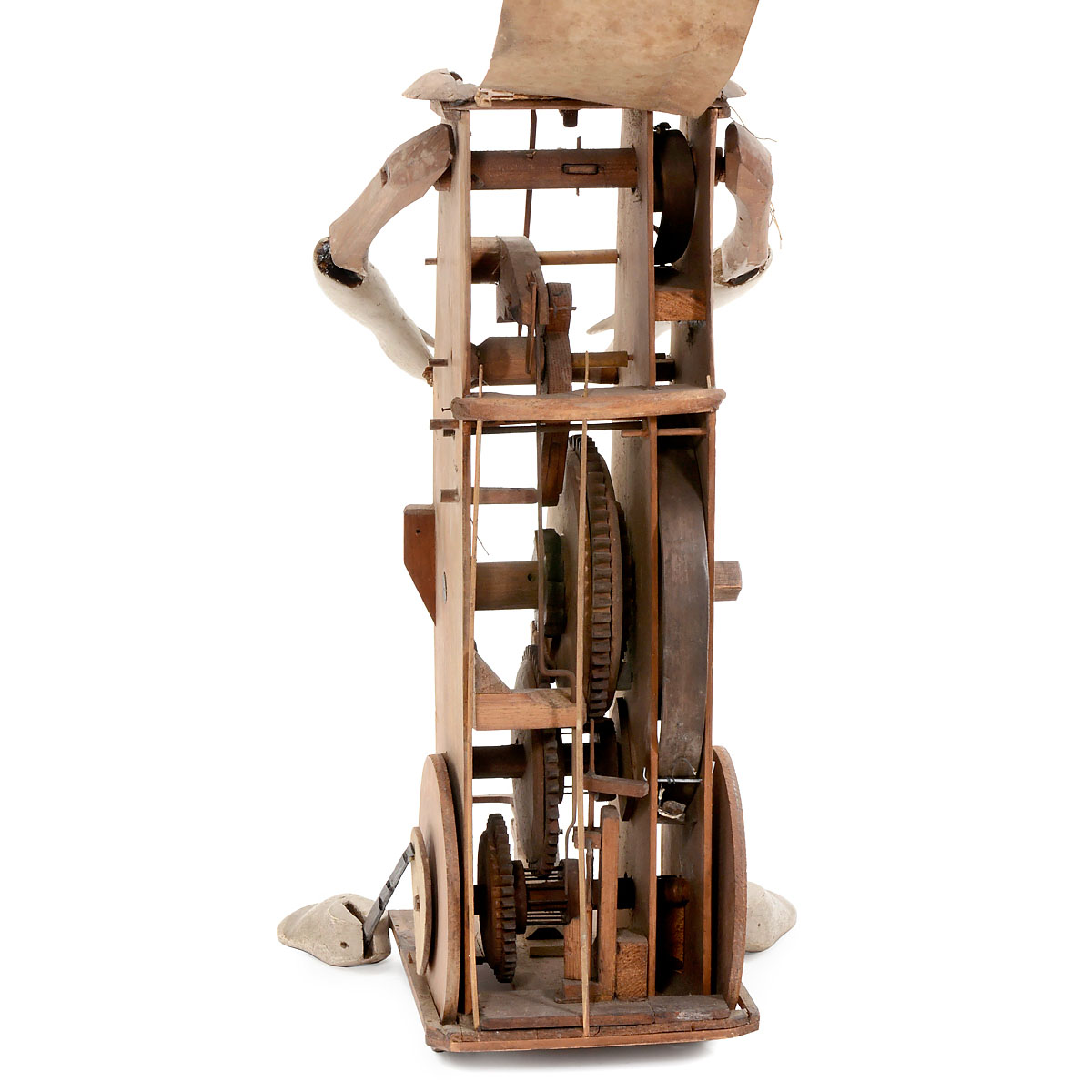
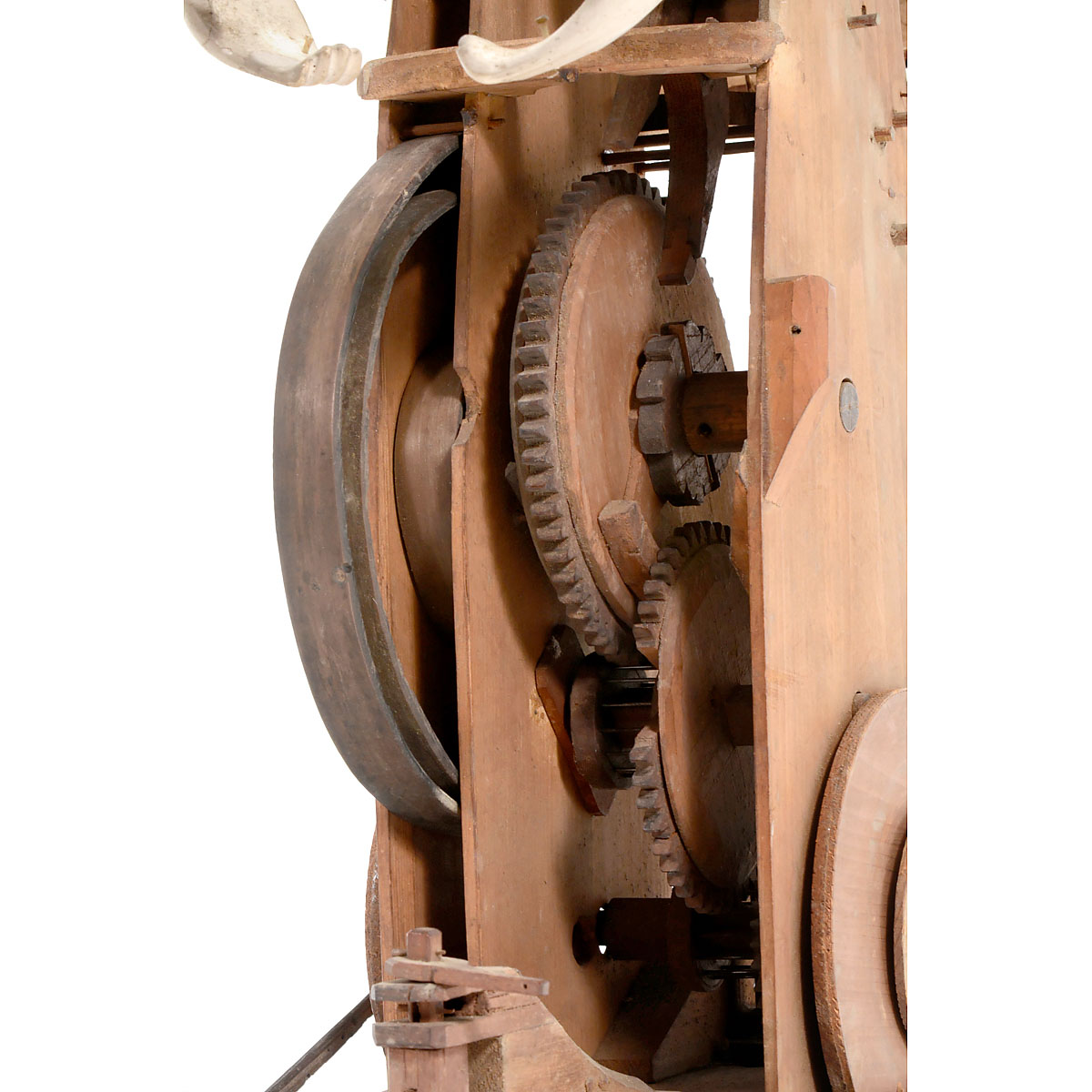
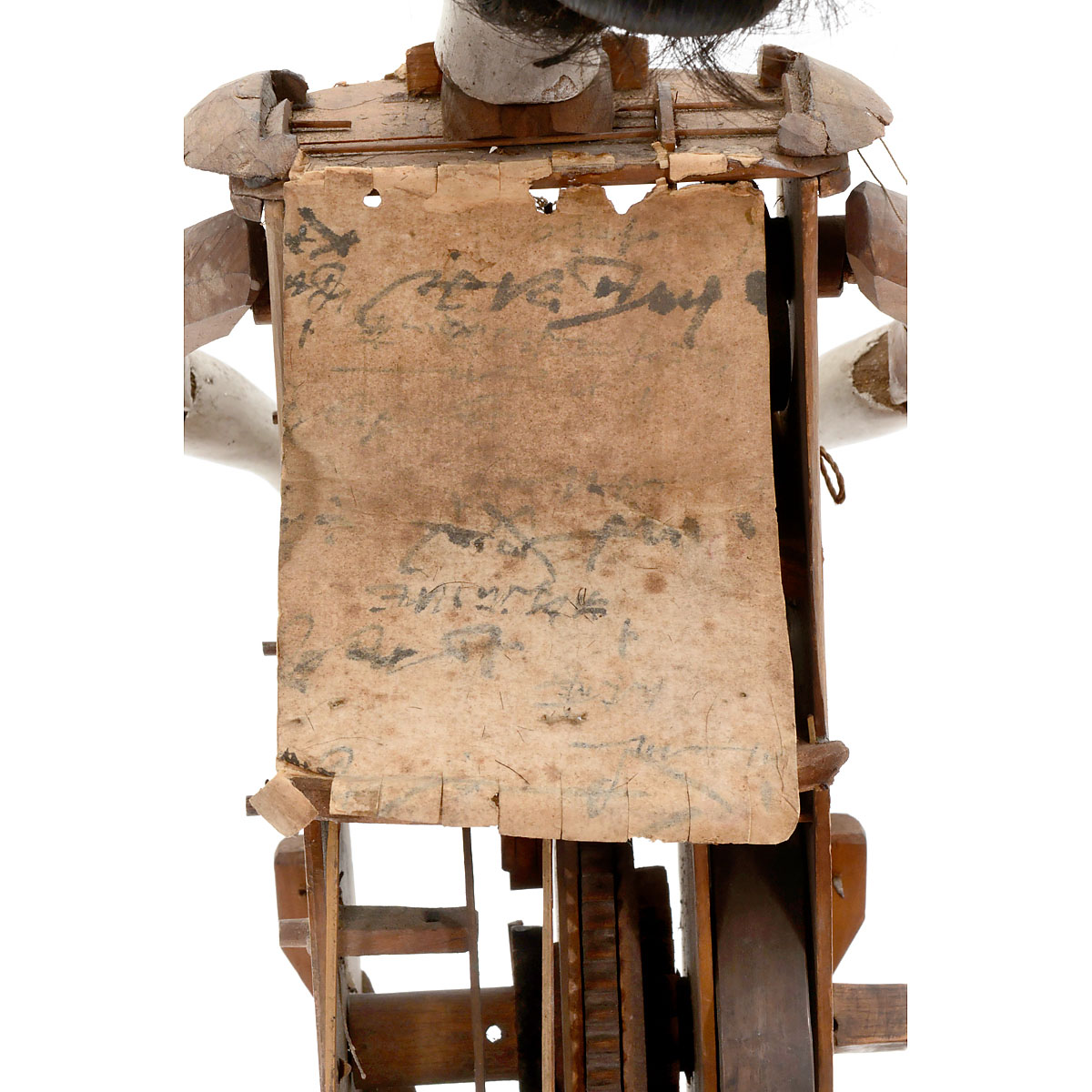
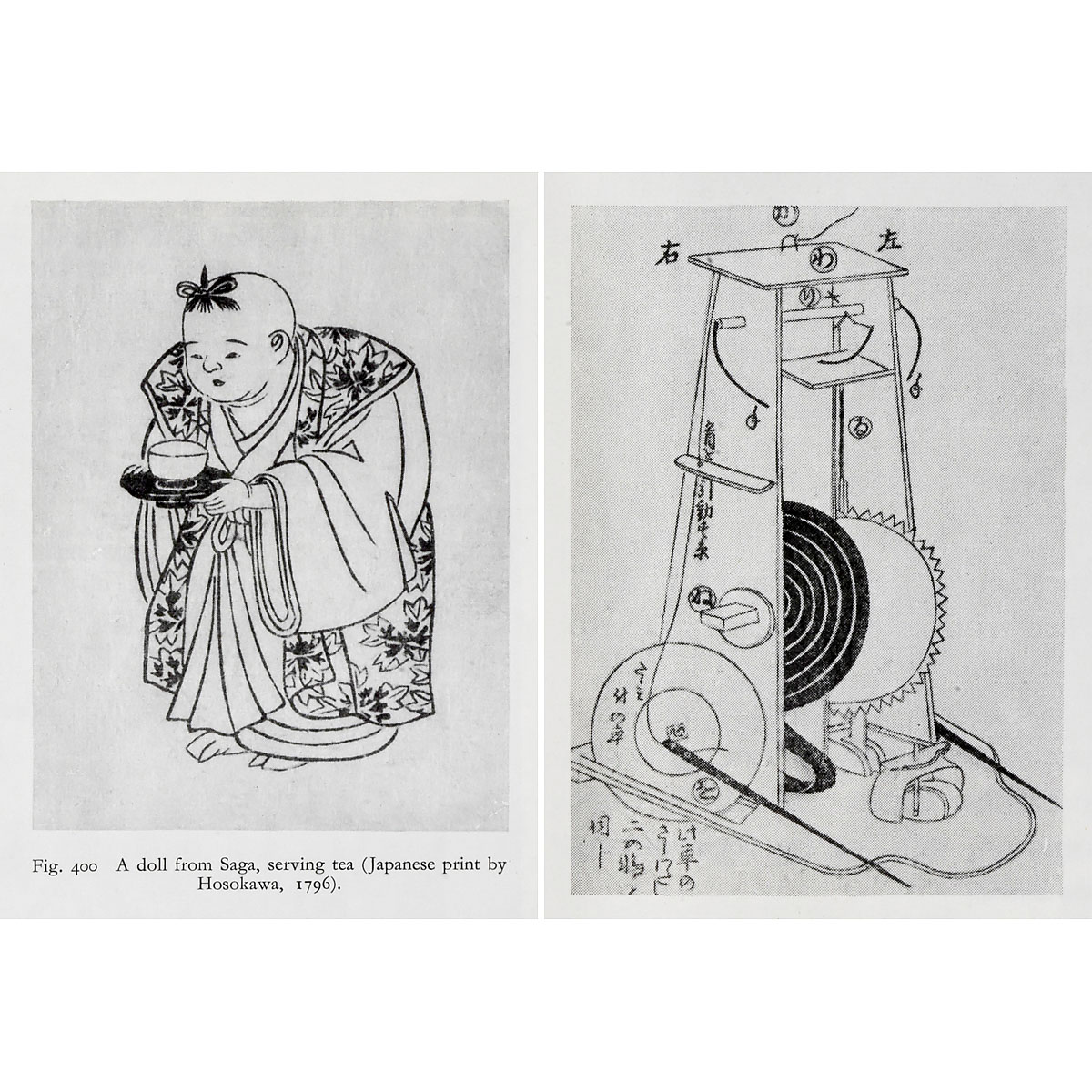
Rare Automaton Chahakobi Ningyō (Tea-Serving Doll), School of Ta
拍品号:20161105-513
预估价:€ 12000-18000 欧元
起拍价:€ 11000 欧元
成交价:
€ 22134.1 欧元
外观成色:3-
布雷克拍品等级是为了方便竞买人判断拍卖品的成色而设置的。布雷克等级用1到6级来标注外观和功能的成色,(从非常好到非常差)。
在目录图册里用括号里的2个数字来表示,前一个数字表示外观成色的级别,后一个数字表示功能成色的级别。如(3/2)表示外观成色是3(满意的),功能成色2(好)。
成色 定义参照下列标准: 1 - 非常好 (未使用过,没有使用痕迹) 2 -
好 (新,极少的使用痕迹) 3 - 满意的 (普通的使用痕迹) 4 -
及格的 (明显的使用痕迹,某个非主要部件是后配的) 5 - 有缺陷的 (极明显的使用痕迹,
某个主要部件是后配的,功能上有缺陷,需要修理) 6 - 非常差 (严重破损, 缺少重要部件)
功能成色:5
布雷克拍品等级是为了方便竞买人判断拍卖品的成色而设置的。布雷克等级用1到6级来标注外观和功能的成色,(从非常好到非常差)。
在目录图册里用括号里的2个数字来表示,前一个数字表示外观成色的级别,后一个数字表示功能成色的级别。如(3/2)表示外观成色是3(满意的),功能成色2(好)。
成色 定义参照下列标准: 1 - 非常好 (未使用过,没有使用痕迹) 2 -
好 (新,极少的使用痕迹) 3 - 满意的 (普通的使用痕迹) 4 -
及格的 (明显的使用痕迹,某个非主要部件是后配的) 5 - 有缺陷的 (极明显的使用痕迹,
某个主要部件是后配的,功能上有缺陷,需要修理) 6 - 非常差 (严重破损, 缺少重要部件)
制造商:
制造年份:
序列号:
拍品描述
Japan, with pivoting pin-jointed papier-mâché head, original gofun finish, fine brushstrokes for the eyebrows and strands of hair on the forehead and temples, original hair wig arranged in top-knot, carved wood body with stained-bone open-spring motor driving three wood gears, two 4 ½ in. (11,5 cm) diameter wheels for movement of the feet, 1 ¾ in. (3,4 cm) diameter front wheel and a stepped runner for the arms which are fitted with a coiled bone assist-spring for upward and a weighted rod for downward motions, the interior of the head and card cover on the back of the body with ink inscription, ht. 19 in. (48,5 cm), missing eyes and tray, inoperative. With fragments of hollow wood saucer. – The Japanese art of the "Karakuri Ningyō" (or mechanical dolls) stretches back to the end of the Muromachi period (1333–1568) when the first timepieces from Europe arrived on Western ships. During the isolationism of the Edo period (1603–1868), Japan developed and refined its domestic mechanical technology through the imagination and technical artistry of successive generations of craftsmen. – "Chahakobi Ningyō", or the tea-serving doll, is arguably Japan's first 'home entertainment robot' . According to the classification of the JIRA (Japanese Industrial Robot Association), the tea-server is a "fixed sequence" robot. When a cup of tea is placed on the figure's tray (now missing), she advances across the table to the waiting guest. Removing the cup halts her progress and replacing the empty cup on her tray causes her to turn around and walk back across the table to the host. – "The tea-serving doll is not only excellent from a mechanical perspective, but it also displays an intriguingly human essence. Historically, its existence provided entertainment and functioned as a way of deepening communication between a host and guest." (www.karakuri.info). – Satō Narumi's article "The Dolls that Sparked Japan's Love of Robots" provides a short history of the "Chahakobi Ningyō", one of several mechanical dolls built by the 17th century watchmaker Takeda Kiyofusa and illustrated in Hosokawa Hanzō Yorinao's work "Karakuri Zui" ("An Illustrated Compendium of Clever Machines") of 1796. – The book was revolutionary in many ways. Not only was it Japan's first text on mechanical engineering, it also revealed the secret construction techniques of Karakuri automata traditionally only passed from master to apprentice like ancient mysteries. "The logic of the parts had to remain a mystery if the real point of the device – the discrepancy between inside and outside, input and motion – were to be enjoyed." (http://www.karakuri.info/master/index.html) – Contemporary Karakuri maker Han'ya Harumitsu argues that "the publication of his book is the point of departure for the journey that has led up to Japan's status today as a pioneer in robotics". There is a fundamental link between the mechanical dolls of the Edo period and contemporary Japanese technology. "The way that these dolls employ gears and other clever techniques to control and redirect the clockwork motion has something in common with how modern robots are directed by computer programs." – A rare and important document in the development or automata and robotics. – References: Andrea Robertson (1992), "Museum of Automata" catalog, pp. 55–57; Satō Narumi (2013) "The Dolls that Sparked Japan's Love of Robots: http://www.nippon.com/en/views/b00907/; Mami Maruko (1999) "On the cutting edge of Edo Technology": http://www.japantimes.co.jp/community/1999/10/30/general/on-the-cutting-edge-of-edo-tech/#.V9-qYTXjSSo; and http://www.karakuri.info/master/index.html for a biography of Karakuri makers.
成色说明
布雷克拍品等级是为了方便竞买人判断拍卖品的成色而设置的。布雷克等级用1到6级来标注外观和功能的成色,(从非常好到非常差)。
在目录图册里用括号里的2个数字来表示,前一个数字表示外观成色的级别,后一个数字表示功能成色的级别。如(3/2)表示外观成色是3(满意的),功能成色2(好)。
成色 定义参照下列标准: 1 - 非常好 (未使用过,没有使用痕迹) 2 -
好 (新,极少的使用痕迹) 3 - 满意的 (普通的使用痕迹) 4 -
及格的 (明显的使用痕迹,某个非主要部件是后配的) 5 - 有缺陷的 (极明显的使用痕迹,
某个主要部件是后配的,功能上有缺陷,需要修理) 6 - 非常差 (严重破损, 缺少重要部件)
发表评论

